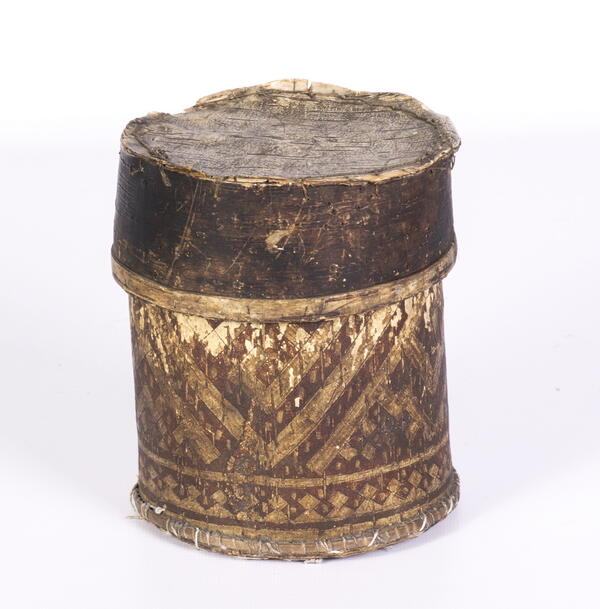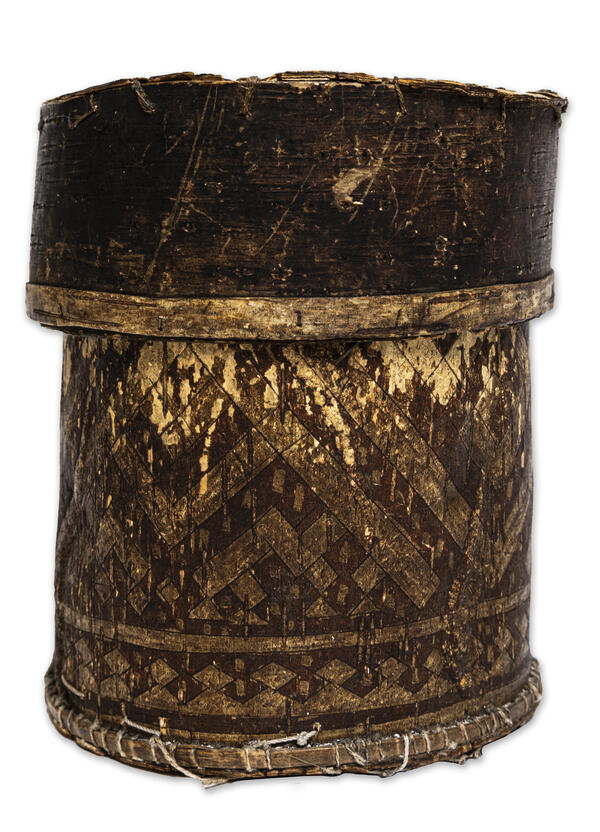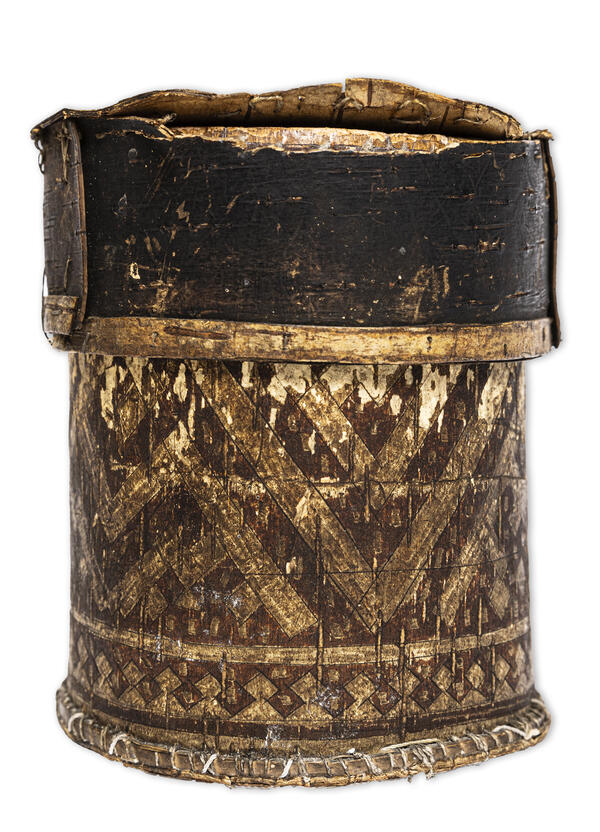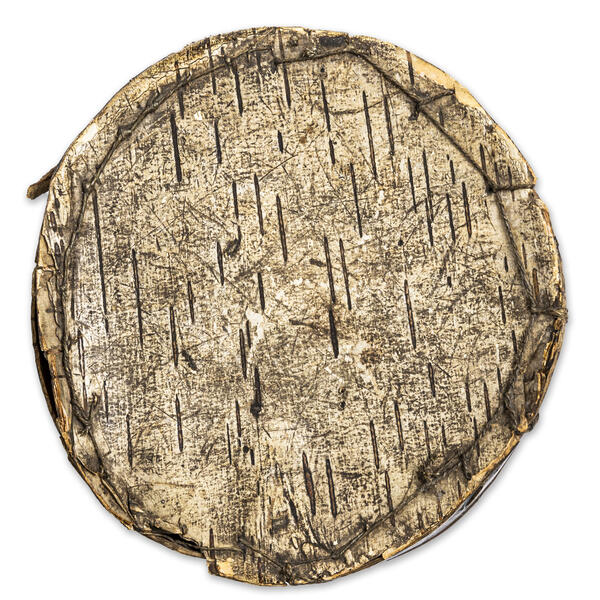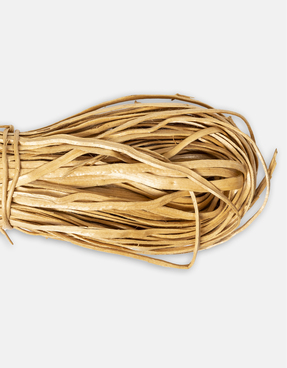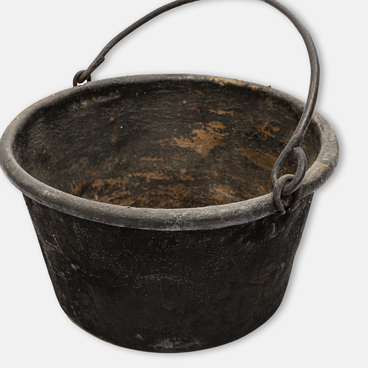Birch bark is the top layer of the birch tree. Since ancient times, various peoples have used this material in box and basket weaving, house construction, decorative arts, and writing. For the Khanty, birch bark was the most widely used raw material for making household utensils.
Birch bark harvesting has always been done three times a year, when the sap flows most intensively: in spring before the crust melts, in July when rosehip flowers, and during autumn leaf fall. Three incisions are made on the tree: one vertical, down to the bast, and two horizontal ones, designating the area intended for cutting. The harvester then uses their hands and removes the bark from right to left, making sure not to damage it. After that, the rough top layer is cleaned by scraping, and the bark is processed.
To make the birch bark softer and stronger, it is boiled for 10–12 hours. For this purpose, birch bark pieces are twisted into tubes and placed vertically in boilers. Water is added, and the boiler is covered with moss. After that, the material becomes pliable and suitable for making a variety of objects. Sometimes, birch bark is boiled in fish oil to improve its resistance to water and low temperatures.
Birch bark products are decorated by scraping. The pattern is first scratched with the blunt side of the blade, then one has to wet the birch bark piece and use a sharp knife to remove the brown layer. Such patterns are usually placed around the entire perimeter of the container or on its lid. They are quite complex, but stencils are not used in this technique.
The lid is made separately, after the basket itself, to ensure a perfect fit. Most commonly, birch bark boxes are used to store dry products and handicrafts. The outside wall is made of the inner layer of birch bark. Even if a box is made of two birch bark layers, the darker one is used on the outside.
The box from the Ethnographic Museum of the
Varyogan Village features a cherry birch branch rim with dark and light stripes
along the upper and lower edges, sewn with tendon threads. Sometimes, a double
rim was used to reinforce the container. The box has a cylindrical shape, the
walls are decorated with scraped geometric patterns, and the bottom is cut off.
Ash is kept inside this box.

